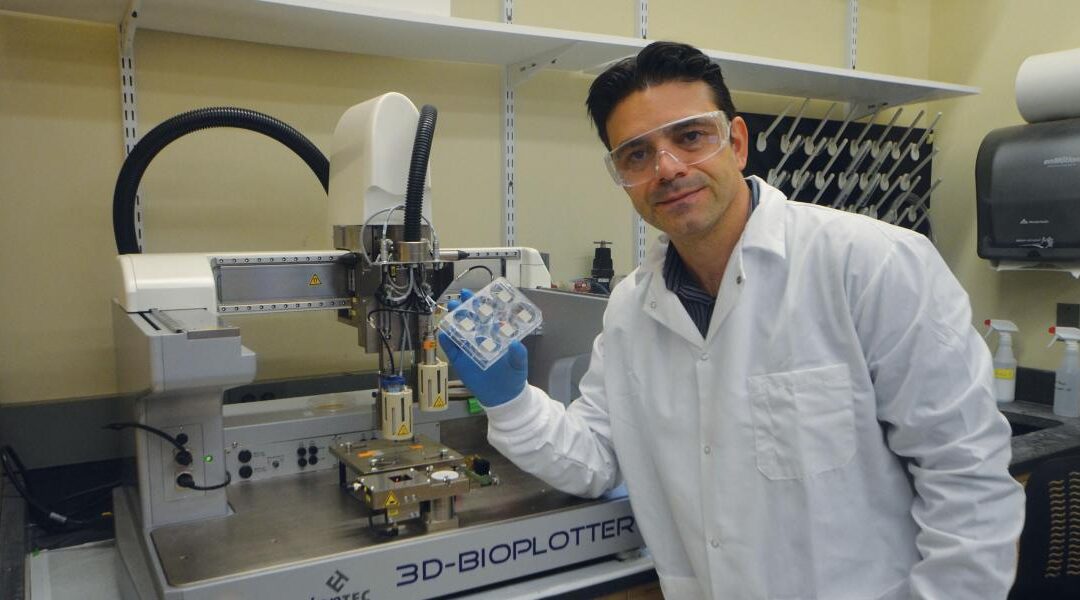There is no sustainable cure at present for osteoarthritis, the most common chronic musculoskeletal disorder of the joints. And while joint replacements are successful treatments for older patients with already reduced mobility, they hold less promise for younger patients, with failure in the long-term nearly guaranteed. Biomaterial engineers propose another solution: restoring the damaged tissue itself. “The gap between supply and demand for transplantable tissues and organs is continuously increasing,” says Murat Guvendiren, an assistant professor of chemical and materials engineering who is developing biomaterials designed to enable the production of fully functional, human-scale tissues and organs that are capable of replacing failed organs. Known as bioinks – hydrogels seeded with live human cells that are 3D-printed in the lab – these materials could potentially be used to construct highly complex and patient-specific tissues and organs, as well as tissue interfaces. To read the full story.

